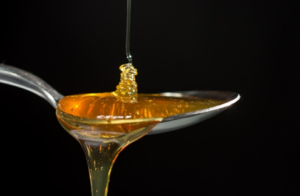By Chris Hassam
Nanofluids have some amazing properties. They show great thermal conductivity, critical heat flux, and amazing optical properties. They are of interest in heat transfer science, as coolants or for high temperature applications, and are useful in producing nanoceramics. Regardless of the final application and form, nanofluids are a dispersion of small solid particles in a liquid (the base fluid). Nanofluids can be used in very dilute forms, in which case they tend to behave similarly to the base fluid. However, if the concentration is increased, they can start to show some very different behaviour.

High-concentration nanofluids can show increased viscosity, or non-Newtonian behaviour, and this can be a problem for application. If the viscosity increases too much, pumping the fluid through a pipe or pouring the fluid into a mould can become difficult. Picture how much more difficult it is to pour out honey than water. This leads to more energy being required, leading to lower efficiency, and could even completely cancel out any benefit of the nanofluid in the first place. Therefore, it is critical to keep the viscosity low.
My research focuses on the rheological properties of nanofluids. I prepare nanoparticles from a bottom up approach from an alkoxysilane precursor, letting me have control over their size and dispersity. I chemically modify their surfaces using click-chemistry, producing very densely functionalised nanoparticles.
The functionality affects the particle properties, giving nanoparticles that show different levels of hydrophilicity or hydrophobicity, ones that show different behaviour at different ionic strengths, and ones that are pH responsive. I investigate how these factors affect the interparticle interactions and the particle-solvent interactions of the nanoparticles. The nanofluids I investigate for their rheological and optical properties, as well as assessing their stability, with an aim towards creating high concentration solutions without the unfortunate increase in viscosity.

